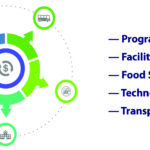Finding ways to connect passion to the position
Fatigue. I think that is the best word to explain how our education clients are feeling. I have been retired from my work at a school district for nearly eight years, but the stress I feel from some of our clients is very real – and familiar. The pandemic’s impact was hugely cumulative. In the beginning, school district personnel were making the best of the situation. But, as the circumstances endured, more and more people began entertaining the possibility of leaving education. If our districts are only as good as our people, I began wondering what talent retention lessons can we extract from the pandemic and apply them to our efforts moving forward?
First, let’s talk about the special breed of person that elects to work in the education field. The very best are in it for the kids, not for themselves. There is a vibrancy to their service. I recall many years ago, the district where I was working had an elderly middle school campus supervisor (the company had to amend the database because his birthdate was older than what had originally been programmed in). He was terrific at his job and the kids looked to him as the friendly, resident “grandpa” on campus. I asked him once why he was still working. He said, “I’m looking at the future. What is better than walking into work and seeing our future leaders every day?” He was coming from a place of pure passion, and, while he may have had some challenges with day-to-day tasks at work, he stayed because the impact was real. The work he was doing made him feel like he was making a real difference to a lot of kids. Now, that is powerful.
Class and Comp Studies Surge
Today we’re seeing the numbers pertaining to the illness dropping and as positivity starts to resurge in schools, we remain in a delicate state. We must balance a new normal with creating an environment that attracts the best in the field.
Recently, we’ve seen an increase in districts asking for classification and compensation studies (class and comp). These studies include updating job descriptions and assigning current market value for that type of work. Right now, this type of study is more important than ever, as we’re seeing people doing jobs differently or several jobs being combined to accommodate our new normal.
“One example: what to do with bus drivers when the kids weren’t around. With kids out of school, instead of furloughing drivers, districts were asking them to drop off meals or undertake maintenance and cleaning tasks.”
School leaders have redesigned how their organizations run in order to be most efficient so, a class and comp study is a good way to make many of these efficiencies permanent and properly rewarded.
Recruiting the best
As a former Director of Classified Employees for a school district, my job involved recruiting and retaining the right talent. Class and comp is an important piece of this because the study work involved leads you to discover what attributes and traits you want to reward in your district and what those rewards need to look like to be competitive. Are you paying enough to get the right talent? Are you building a system that has enough extrinsic and intrinsic rewards over time to retain that hard-won talent for the long haul?
One caveat — I wouldn’t suggest undertaking one of these studies if you are a new leader coming into an organization. Allow time to get acclimated with your staff and leaders to then make the decision if you need outside help analyzing your workforce. However, I do recommend a study if it’s been longer than five years since you have updated your job roles and descriptions or if you are struggling in retaining or recruiting talent. These struggles can be big indicators that you aren’t competitive enough in how you are positioning your job offerings.

Class and comp can help you position for success in finding the right talent.
Ultimately, you must find ways to connect the passion to the position. Often, when passionate people come into education, they may encounter experiences that make them feel it’s not what they thought it was going to be so they leave. Many administrators and teachers inevitably experience negative hits from the public, the community, parents, and students. Not every child is the “unicorn” who is engaged, attentive, manageable, and dynamic. When the lightbulb goes on for that one child and the teacher sees and experiences that moment, it’s absolute magic.
But that does not happen every day in every classroom. More often, you are dealing with difficult kids while raising your own family. If your pay is low and the benefits aren’t competitive, that can be the proverbial “nail in the coffin” for any career, but particularly in education because of the extreme demands.
When your processes (and, I admit it, your funding levels) allow for a competitive pay environment, a strong benefits package, and an environment of support, and when you find the passionate person who is motivated by social impact, the opportunities for a burgeoning, rewarding career in education are endless.
*Rick Labib-Wood is an Associate with EH&A, now a part of MGT Education.










